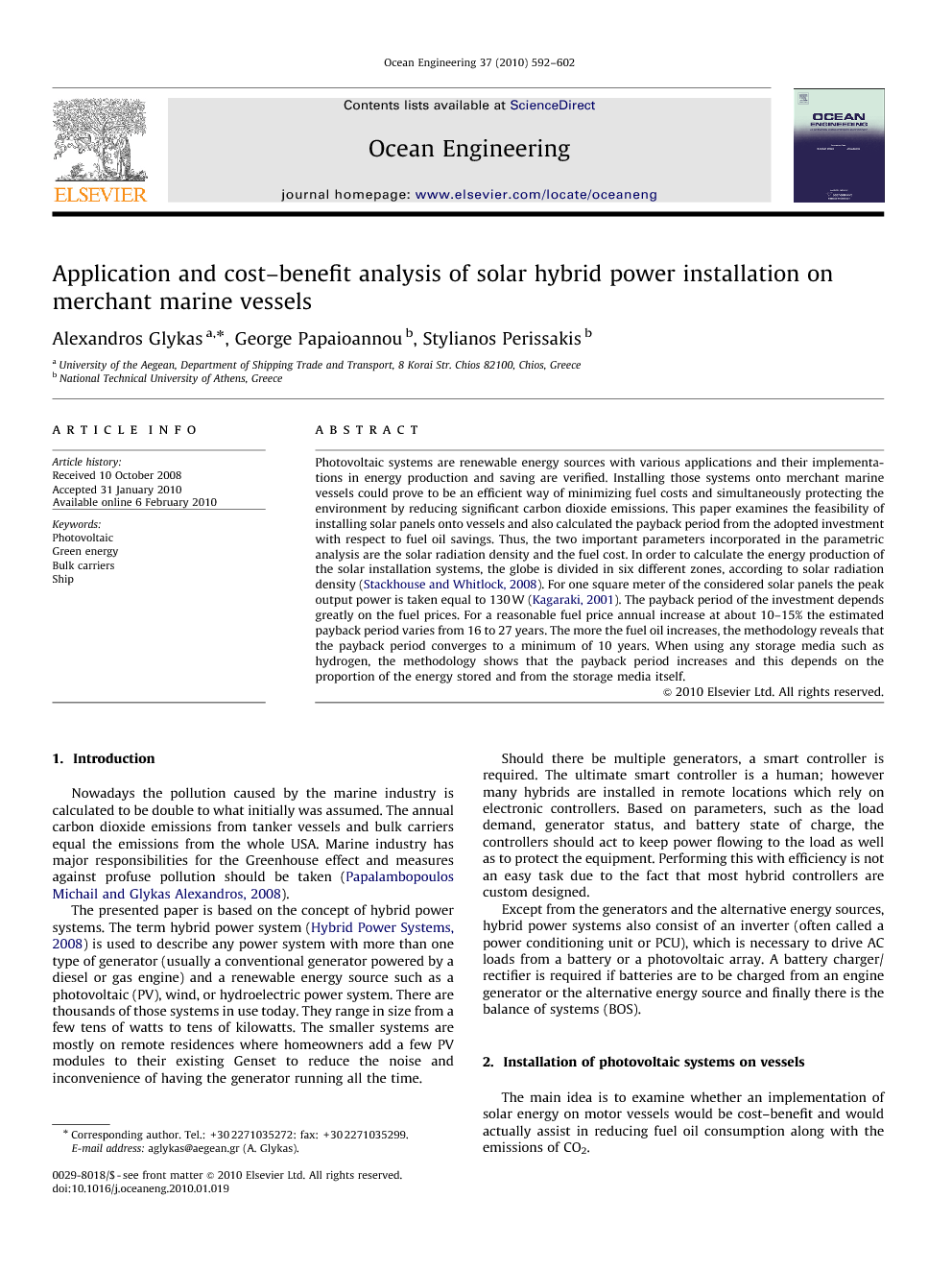ترجمه فارسی عنوان مقاله
تجزیه و تحلیل کاربردی و هزینه ـ فایده نصب و راه اندازی های قدرت ترکیبی خورشیدی در کشتی دریایی بازرگانی
عنوان انگلیسی
Application and cost–benefit analysis of solar hybrid power installation on merchant marine vessels
| کد مقاله | سال انتشار | تعداد صفحات مقاله انگلیسی |
|---|---|---|
| 23488 | 2010 | 11 صفحه PDF |
منبع

Publisher : Elsevier - Science Direct (الزویر - ساینس دایرکت)
Journal : Ocean Engineering, Volume 37, Issue 7, May 2010, Pages 592–602
ترجمه کلمات کلیدی
فتوولتائیک -
انرژی سبز -
حمل فله -
کشتی -
کلمات کلیدی انگلیسی
Photovoltaic,
Green energy,
Bulk carriers,
Ship,

